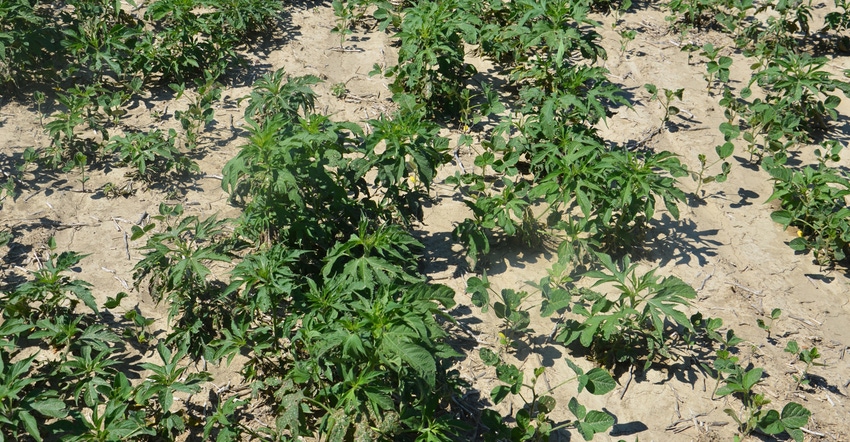
Planting soybeans back to soybeans is a challenge according to five agronomists who agreed to offer insights for those considering such a move this year. The same agronomists say going to beans three or more years in a row can ramp up the challenges to a whole new level.
The panel of agronomists include: Betsy Bower, an agronomist and Indiana Certified Crop Adviser with Ceres Solutions, Terre Haute; Bryan Denning, technical agronomist for Stewart Seeds in southern Indiana and Kentucky; Steve Gauck, a Beck’s sales agronomist based in Decatur County and a CCA; Danny Greene, owner of Greene Crop Consulting, Franklin, and also a CCA; and Bryan Overstreet, a CCA and Jasper County Extension ag educator.
Bower: Just understand you can lose yield due to losing the rotational effect. The issues are the same as for beans after beans. I look at beans after beans as a practice for our less-productive fields provided you don’t have heavy sudden death syndrome, soybean cyst nematode or white mold issues. I see it being for fields with typically less than 160-bushel-per-acre yield potential in corn.
At the same time, also consider that a soybean-on-soybean rotation has more potential to degrade the soil.
Soybean stubble doesn’t hold soil in place very well. A minimal investment in a cover crop could help hold soil during the long winter months; provide a rotational crop effect; compete with spring or early summer annual weeds, depending on the cover crop termination date; and help reduce the potential for SDS, since cover crops help dry the soil in the spring.
There is some field data that supports reduction of SCN levels. Documentation shows SCN reduction occurs when cover crops like cereal rye aren’t terminated early in the spring.
Denning: In more of a long-term approach, soil quality could be compromised in a continuous soybean system. Soybean residue doesn’t add organic matter, and the cover it provides is poor for reducing erosion on hilly fields.
Gauck: When planting multiple years of soybeans, disease pressure will continue to increase. Scouting and planning ahead for diseases and insects will be critical.
Greene: The issue is the multiplier effect. Quicker multiplication of SCN, disease and pest pressure are the great concerns. Developing weed resistance in a monoculture is a fear, as well as weed control.
Overstreet: Each year you grow a continuous crop, you build up the inoculum of diseases, and also the number of nematodes present. If you have a field that has not had much disease or nematode pressure, you may consider trying it. But if you’ve had these issues in the past, it may turn out to be a challenge.
About the Author(s)
You May Also Like




